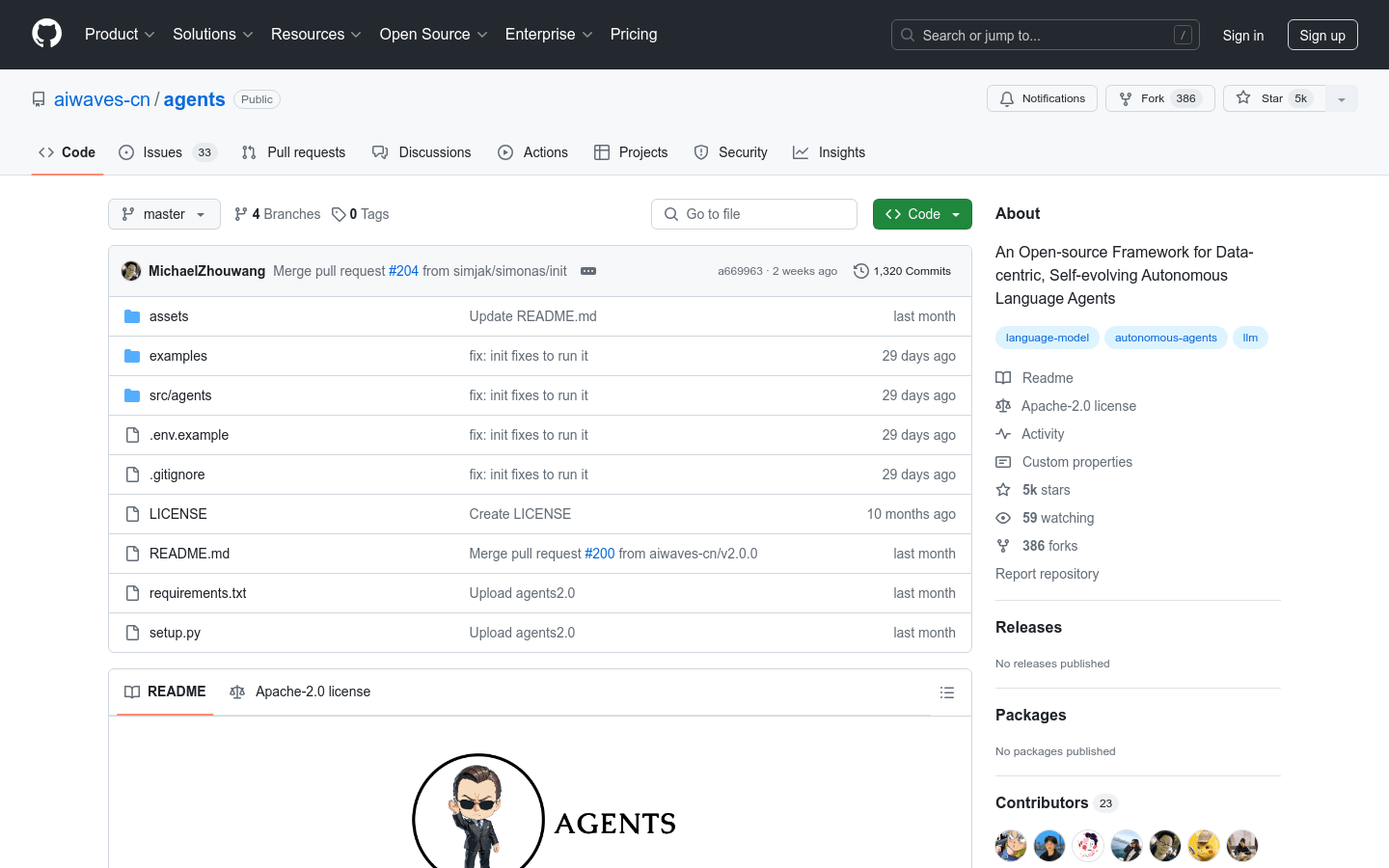

Agents 2.0
Overview :
aiwaves-cn/agents is an open-source framework focused on data-driven adaptive language agents. It provides a systematic approach to training language agents through symbolic learning, inspired by the connectionist learning process used for training neural networks. The framework implements backpropagation and gradient-based weight updates, utilizing language-based losses, gradients, and weights to optimize multi-agent systems.
Target Users :
Target audience includes researchers and developers, particularly those interested in natural language processing and machine learning. This product offers an innovative approach to training and optimizing language agents, suitable for users who need to build complex conversational systems or automated language processing tools.
Use Cases
Researchers use the framework to train chatbots for better understanding of user intentions.
Developers leverage the framework to create automated translation systems for multilingual environments.
Educational institutions adopt the framework to develop interactive language learning applications.
Features
Supports symbolic learning, mimicking the training process of neural networks.
Implements language-based loss functions, backpropagation, and weight optimization.
Stores input, output, prompts, and tool usage through 'forward propagation'.
Evaluates results using prompt-based loss functions to generate 'language loss'.
Backpropagates language loss to produce text analysis and reflections, resulting in language gradients.
Updates all symbolic components and computation graphs based on language gradients.
Supports optimization of multi-agent systems, considering nodes as different agents or allowing multiple agents to act within a single node.
How to Use
Step 1: Clone or download the aiwaves-cn/agents project from the GitHub repository.
Step 2: Read the README.md file to understand the installation and configuration requirements.
Step 3: Install the necessary dependencies, such as the Python environment and other libraries.
Step 4: Set up environment variables and configuration files as per the documentation.
Step 5: Run the sample code to familiarize yourself with the basic operations and features of the framework.
Step 6: Start building your own language agents using the tools and APIs provided by the framework.
Step 7: Adjust and optimize the agent's performance as needed, utilizing backpropagation and gradient update mechanisms.
Featured AI Tools

Alice
Alice is a lightweight AI agent designed to create a self-contained AI assistant similar to JARVIS. It achieves this by building a "text computer" centered around a large language model (LLM). Alice excels in tasks like topic research, coding, system administration, literature reviews, and complex mixed tasks that go beyond these basic capabilities. Alice has achieved near-perfect performance in everyday tasks using GPT-4 and is leveraging the latest open-source models for practical application.
AI Agents
460.4K

Feshua Smart Assistant
Feshua Smart Assistant is an intelligent assistant product that allows users to choose their favorite avatar, set a name, and remember user behavior on Feshua. It supports the deployment of business applications on Feshua, enabling cross-system task completion and a unified user experience. The product aims to enhance work efficiency and creativity, serving as a new type of digital employee for enterprises.
AI Agents
207.3K














